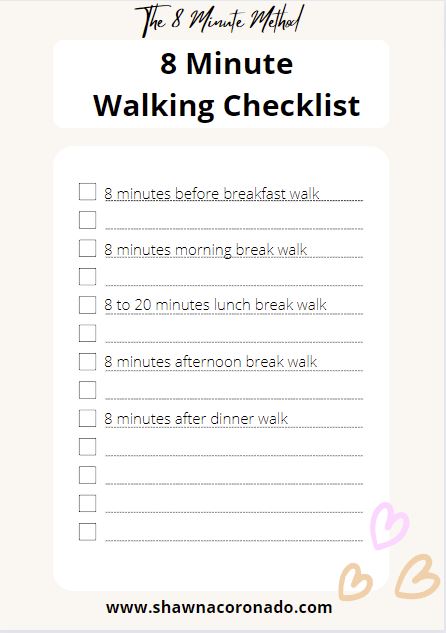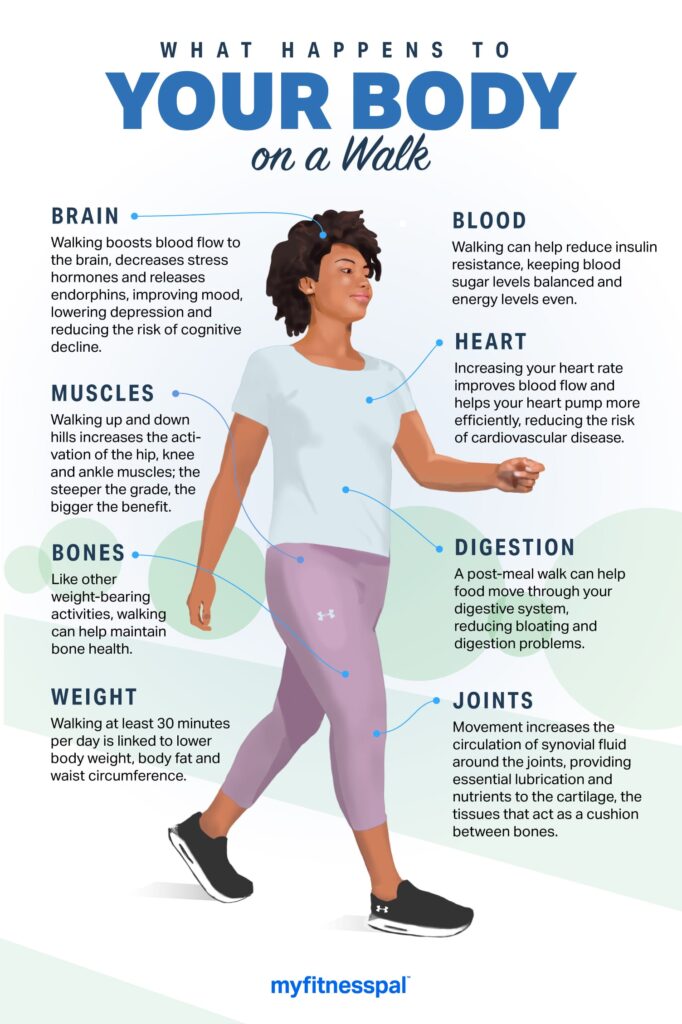How Do You Make a Walking Schedule?
Why Make a Walking Schedule?
Forming a walking schedule can seem silly at first – just get out and walk, right? How hard can it be? Well.. the truth of the matter is that we all have incredibly busy lives; raising children, working full-time, and hustling to stay on top of all the worries of the world. These busy schedules often lead to starting up with a walking plan, but soon dropping it because you do not have time for an hour of walking every day.
The CDC recommends regular walking for better health. Forming a walking schedule can KEEP YOU ON PLAN, encourage you to walk year round, and help you keep your energy up and feel better every day. It makes sense to create a walking schedule. It can help you from falling off the walking wagon.
Why is Walking Daily Important?
Walking is very important. You can cut your risk for heart disease by 23%, simply by walking 23 minutes per day. Letting yourself sit around in front of the television without exercise can increase your risk of virtually all inflammatory diseases such as diabetes, high blood pressure, and heart disease. In order to reduce your risk of disease, just increase your physical activity. No fancy exercise is needed. Walking 150 minutes per week (according to the CDC) can be accomplished with brisk walking.
Another benefit of walking is an increase in positive mental health and decrease in depression and anxiety. Whenever I feel a little blue, I know it is time to up the walking for a bit. It increases endorphins and mood. In these challenging times a good walk can make a huge difference.

How to Schedule Daily Walking
In order to best understand how many steps you are taking daily and how many minutes you are walking, it is best to track your steps. You can get a tracker watch (I use a Samsung variety) or you can have your cell phone help you track with a walking app. I started out with a Fitbit and it worked just fine, so find a tool that works as a pedometer for you.
The 8 Minute Walking Schedule Checklist
Keep a daily schedule checklist. I started with a simple walking checklist (see right). Instead of walking for hours at a time, which I find completely unrealistic with my own daily schedule, I began with 8 minutes at a time.
Use The 8 Minute Method as a starting point. At first I walked before breakfast, during lunch break, and at my afternoon work break. Toss on supportive shoes and walk for ONLY 8 MINUTES. If you do this 5 times per day, you are getting nearly 40 minutes of walk time in every day. Then I began increasing the the frequency and time depending on my schedule.
Beginner Walking
Depending on your physical condition, a beginner walk might be a brisk walk for 8 minutes several times per day for the first month or so, gradually increasing. If you have balance issues and cannot walk briskly, walk slowly. Do this for 30 days before increasing to intermediate. The rule is 30 days to a good habit. This is your first 30 days of goodness for your body!
Intermediate Walking Schedule
If you feel strong and ready to increase your times, try taking more breaks during the day to walk. It’s only 8 minutes, so a walking work break is usually no problem. Increase your walking time at lunch if this is comfortable for you. No time for a longer walk at lunch? Do it after work. Gradually increase how many breaks you take over several months.
Advanced Walking
Once you fall into the intermediate walking schedule with ease, it is time to take it up a notch. Try walking up and down stairs for your 8 minute breaks. Increase your walking speed for more intensity. Walk with a 10 pound backpack. Use hand weights and swing your arms. It’s wholly up to your body and your doctors recommendations.

Ways to Get Motivated to Do Daily Walking
Some days I don’t feel like doing the walking schedule; usually those days are the days I NEED TO WALK THE MOST. Every day is a little more progress towards your walking and wellness goals. There are many ways to encourage yourself to walk –
- Listen to music. Popping in ear buds and listening to a strong beat offers fantastic motivation. It can encourage you to enjoy the walking breaks you take.
- Dog walking. Take your dog or pet for a walk – they need it as much as you do.
- Do not send an email. We are, particularly at work, likely to shoot off an email to get an answer. Why not get up off the desk and walk to ask the question in person? It is a great way to stay moving.
- Try mall walking. Particularly when you are leaning towards more advanced walks, it is a great idea to go to a mall and walk (mask up for safety). Mall walking offers level ground and a safe place to get your steps accomplished.
- Invite friends or family. Walking and hiking with friends on the weekend or after work or even during lunch hour, means you will have someone to share the time. Choose a beautiful location.
- Park a long way away. Running errands? Park your car far out in the lot so it forces you to walk further.
- Take the stairs. Instead of an elevator, take the stairs. It’s a great way to get more intensity in your walking.
- Walk the store. Do 5 laps around a store before you start shopping.
How Many Steps Per Day Should Your Walking Schedule Include?
This depends on what your doctor or health expert recommends and if you are physically able to walk more or less as recommended. Definitely check with a medical professional before you get started. Then when you do start, do not be put off by all the online misinformation that says you HAVE TO step 10,000 steps per day. This is only a guideline, and a high guideline at that. It turns out that 3,000 to 4,000 steps per day for your walking schedule is what the average American accomplishes.
There was a study done which speaks to step quantity. Researchers discovered that step intensity did not equate lower mortality. There was a 41% lower risk of death for women who took 4,400 steps to 7,500 steps per day. Having a daily walking schedule set can encourage you to stick with both a number of minutes and a number of steps. Understanding how many steps per day you have when you begin your program gives you a goal to work towards.
How often you walk and how many steps you take when you are walking is an individual goal based on your doctors recommendation. Getting started with the first step is the best way to staying regularly active.





